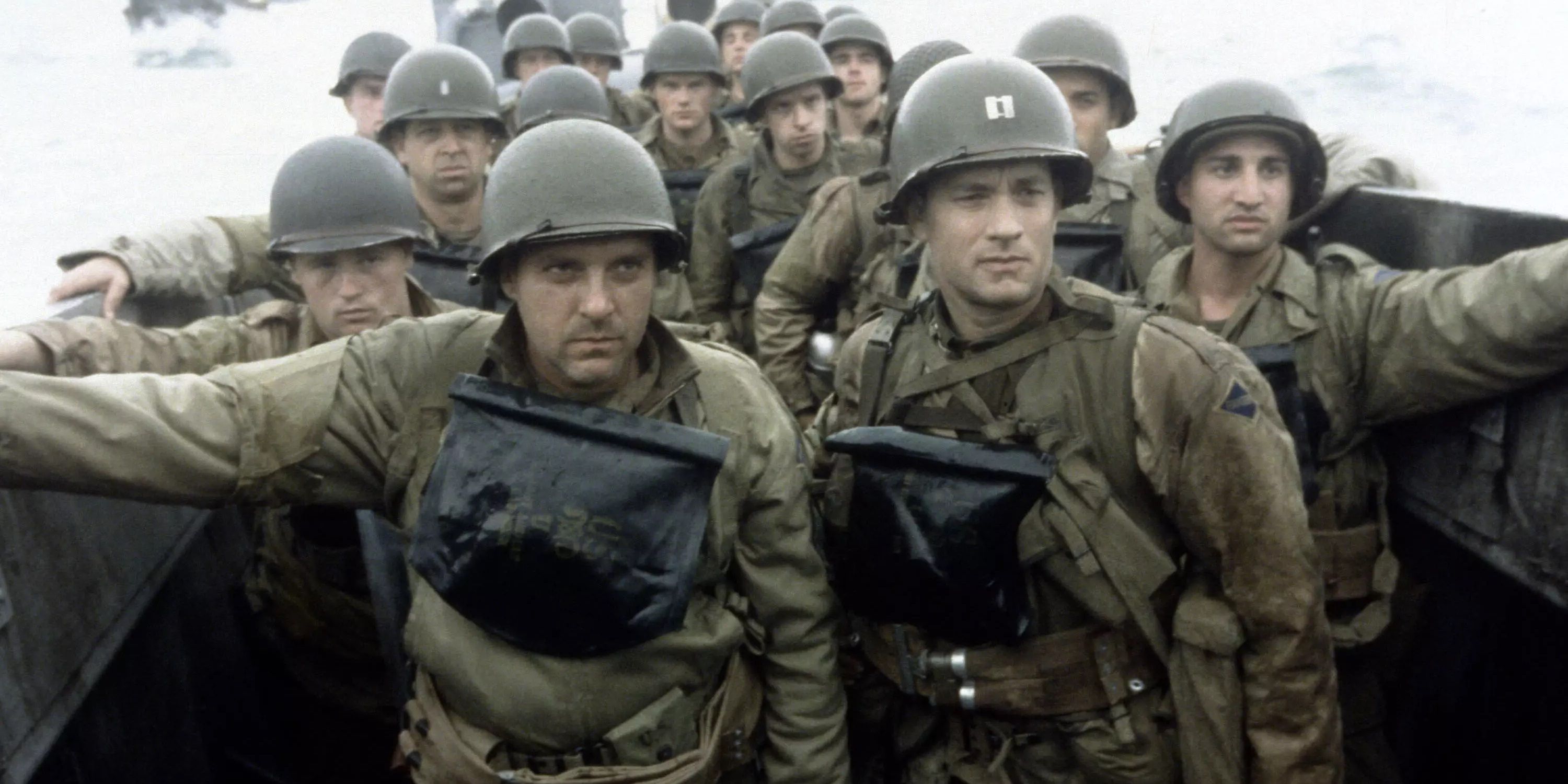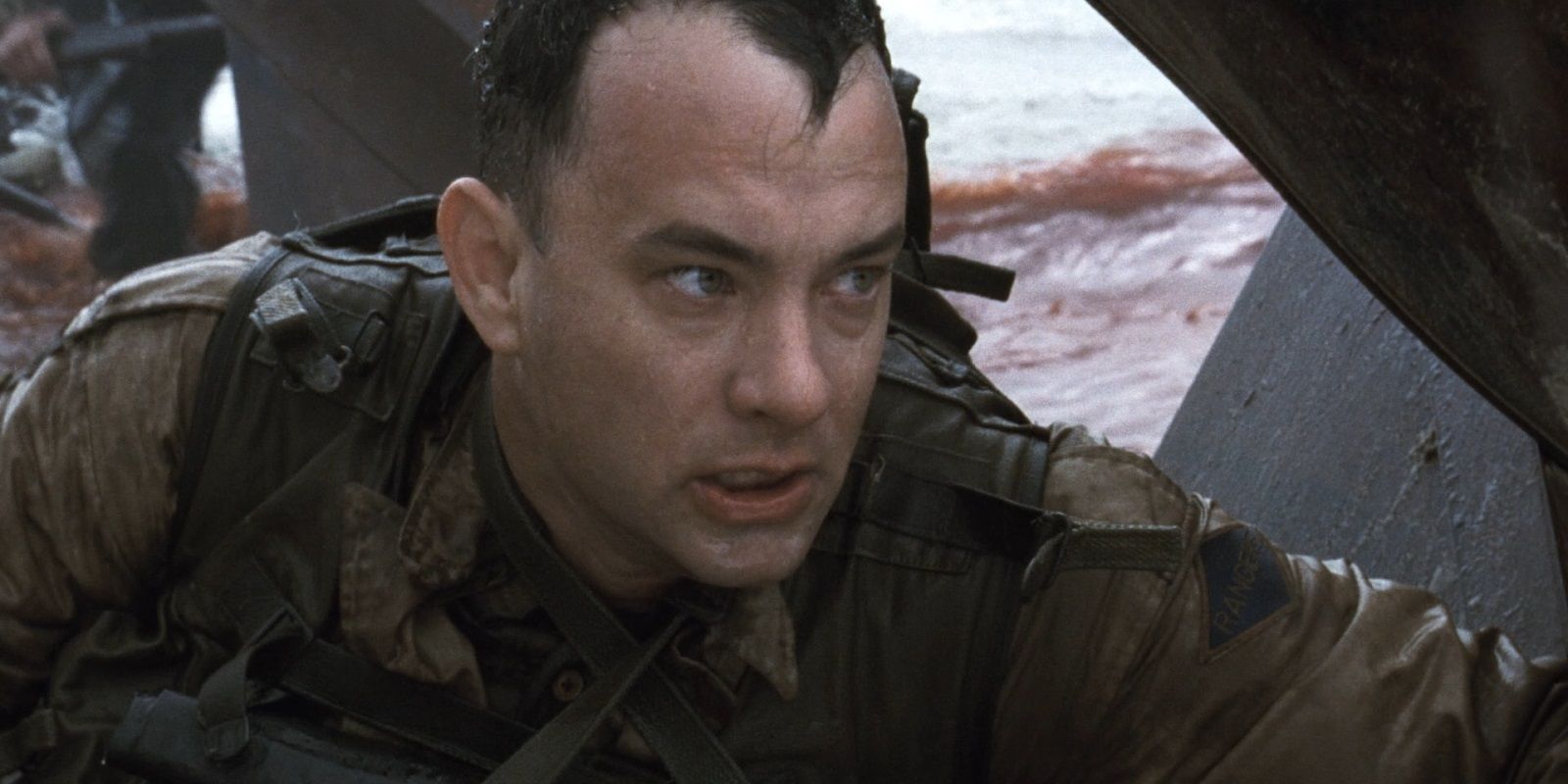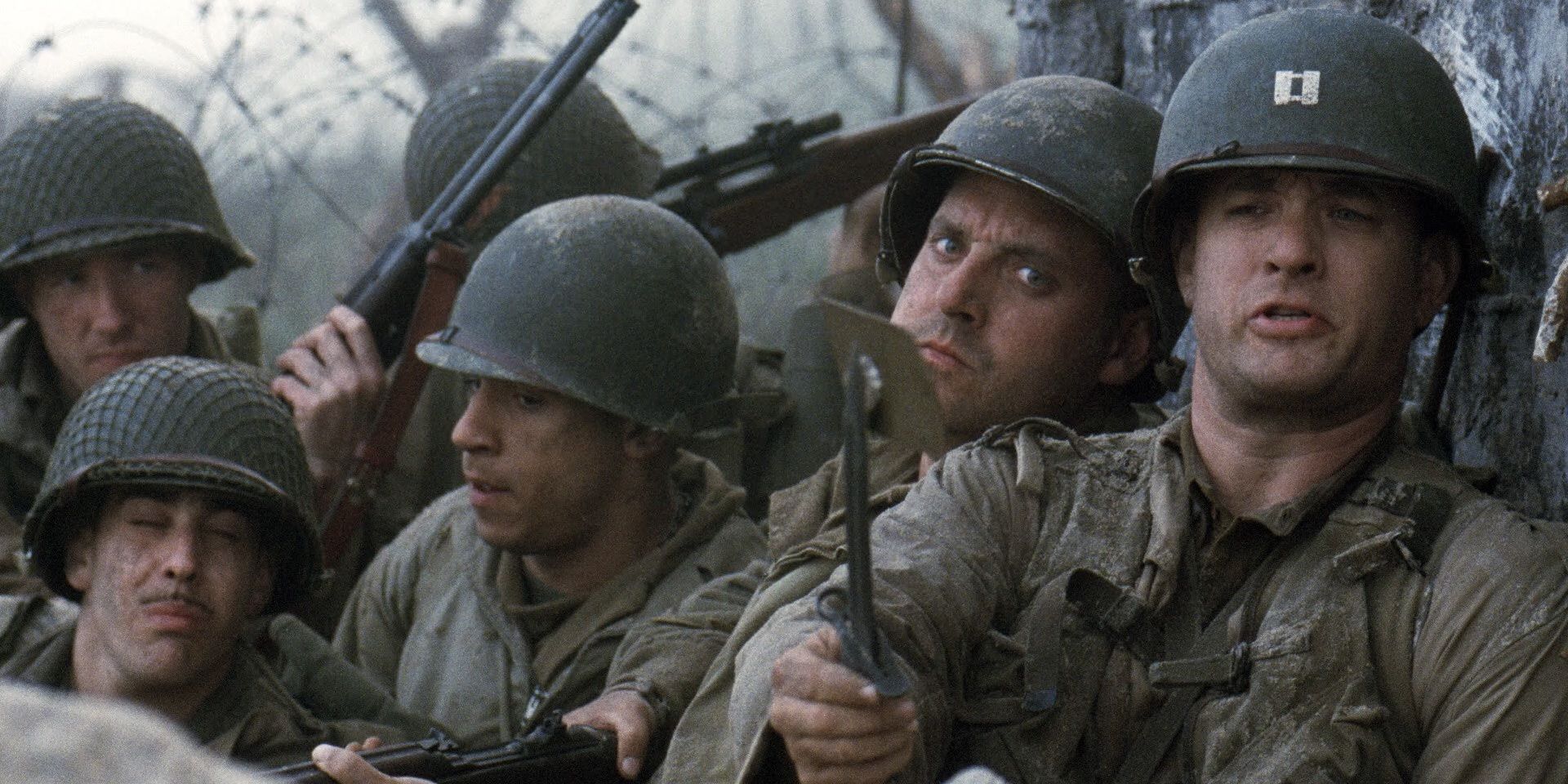
Steven Spielberg’s Saving Private Ryan is widely praised as one of the greatest war movies ever made. Told through the eyes of Captain Miller (Tom Hanks), a terrified but level-headed schoolteacher and everyman who’s been unexpectedly shipped off to war, the movie captures a microcosm of World War II through its tale of the search for the last surviving brother of a grieving American family. Saving Private Ryan as a whole is celebrated as a classic, but no scene is discussed more than its recreation of the D-Day landings.
The sequence is so memorable that it’s often mistakenly referred to as the movie’s opening scene, despite the framing narrative of an older Private Ryan visiting military graves. With the 25-minute D-Day sequence, Spielberg instantly immerses the audience in the horrors of war. As with any of the greatest sequences ever put on film, the story behind Saving Private Ryan’s D-Day landings set piece is a fascinating one.
RELATED: Star Wars: The Series Should Take Inspiration From This Spielberg Movie
Spielberg recognized that the D-Day invasion was one of the most important scenes in the movie. He assembled 750 extras on the east coast of Ireland and carved a whopping $12 million chunk out of the movie’s budget to pay for it. The director knew that it could make or break his ambitious WWII epic. It would either get viewers hooked straight away or turn them off before the main plot was even in full swing. Thanks to Spielberg’s unique approach to the piece, it turned out to be the former. Not only did the visceral D-Day re-enactment get the audience hooked for the rest of the movie; it remains one of the most unforgettable sequences in cinema history. It also generated enough buzz to make Saving Private Ryan one of the biggest hits at that year’s Academy Awards.

While most movie productions utilize storyboards and shot lists – especially for big, complicated action scenes like this – Spielberg decided to use neither in creating Saving Private Ryan’s D-Day set piece. The script didn’t include much specific action. In fact, the sequence as written was only about seven pages long. There’s a general rule that one page of script equals one minute of runtime, but Spielberg ended up turning those seven pages into a 25-minute sequence.
Winging it on the day is an extremely risky way to approach filmmaking – particularly filmmaking on the scale of Saving Private Ryan – and if anybody other than Spielberg had wanted to shoot this way, the producers and studio executives with millions of dollars at stake would’ve undoubtedly shut them down. But, as told to the DGA (who awarded Spielberg’s work on Saving Private Ryan with their Outstanding Directorial Achievement in Motion Pictures trophy), the director had a good reason for tackling the D-Day invasion this way: “I had to shoot this sequence one step at a time, because that’s the way the Rangers took the beach: one inch at a time. As a result, I was able to make up this whole sequence as I went along.”
While the elaborately staged battles of some war movies fail to connect with audiences because they feel too carefully planned to really capture the grim realities of war, Spielberg’s spontaneous coverage of the D-Day landings resulted in a frenetic, engaging sequence that still packs a punch after 100 viewings. Spielberg said that “[coming] up with shots on the spur of the moment and not a month ahead of time... helped make things a little more chaotic and unpredictable.”

For the dreary visual palette of the movie itself, Spielberg told cinematographer Janusz Kamiński to make the movie look like a colorized 1940s newsreel, but the D-Day invasion sequence specifically has the gritty, realistic feel of a documentary. This was achieved by following the action with handheld cameras – just like a real documentary crew would – instead of rigidly sticking to a plan meticulously cooked up during pre-production.
Some moments in Saving Private Ryan’s D-Day sequence are as haunting and disturbing as anything you’ll find in a horror movie, like the dazed soldier finding his own severed arm on the beach or the soldier who takes off his helmet and promptly takes a bullet to the head. Plus, a couple of little details throughout the sequence hint at moral gray areas that exist in any warzone. Whereas most Western-made World War II movies will paint the Allied powers as heroes and the Axis powers as villains, Saving Private Ryan suggests it was much more complex than that. During the D-Day sequence, Allied troops gun down a couple of scared, surrendering German officers in cold blood.
The result of Spielberg’s novel approach to shooting the scene is one of the most harrowing portrayals of warfare ever put on film. The director’s dramatization of the D-Day landings reportedly triggered PTSD attacks in real veterans who were on the beaches of Normandy. While that widely circulated nugget of trivia is terrible for those veterans, it’s a testament to the intensity and historical accuracy of Spielberg’s filmmaking. The only downside of his masterfully crafted recreation of the storming of the beaches of Normandy is that nothing in the rest of the movie could live up to it.
MORE: Steven Spielberg's Unused Idea For Jaws 2 Would've Been Much Better

